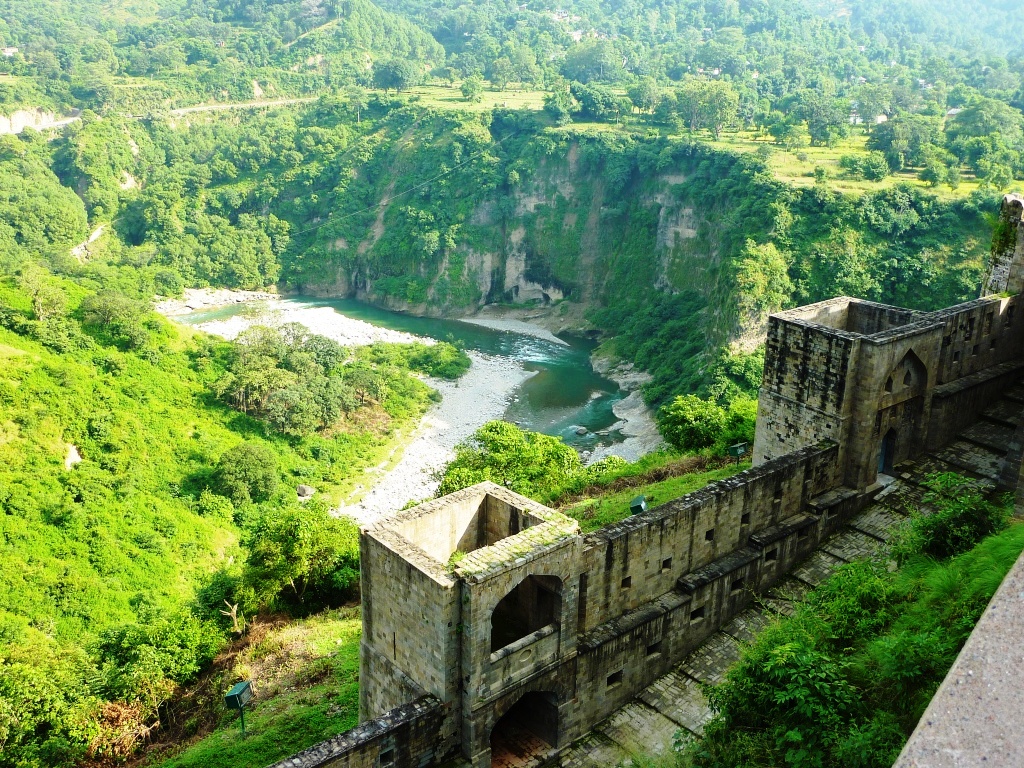Kangra and its special attractions
The Kangra Fort was designed by the royal Rajput family of Kangra (the Katoch dynasty), that traces its origins to the ancient Trigarta Kingdom, mentioned within the Mahabharata epic. it’s the biggest fort within the Himalayas and doubtless the oldest dated fort in India.
The fort of Kangra was taken by the Mahmud of Ghazni in AD 1009. In 1337, it had been captured by Muhammad bin Tughluq and again in 1351 by his successor, Firuz Shah Tughluq. however it had been not fully subdued until 1622, when after a siege of fourteen months, it had been conquered by the MughalEmperor Jahangir Who garrisoned it along with his troops and appointed a Governor to stay the turbulent hill chiefs under control.
In the half of eighteenth Century, following the decline of Mughal power, Raja Sansar Chand-II succeeded in recovering the ancient fort of his ancestors, in 1789. however by carrying his ambitions too far he came in conflict with the neighboring hill chiefs, the Gurkhas.In 1804, crossing the Gadwall finally in 1805 the Gorkha army conquered Kangda valley across the Sutlej stream after continuous fighting for 3 years. untill 1809 Gorkha Army conquered Kangda Fort. subsequently in 1809 the Gorkha army was defeated and that they had to retreat across Sutlej stream. at the same time as British East India Company was additionally in their growth spree of formation advanced up to Nepal’s the then border. Finally, with maharajah of Punjab, Ranjit Singh was the conqueror of Kangra Fort in 1809. It remained within the hands of the Sikhs until 1846 once it had been remodeled to the British Government, in conjunction with the encircling hills.
A British garrison occupied the fort till it had been heavily broken in an earthquake within the year 1905.
The entrance to the fort is thru alittle curtilage enclosed between 2 gates that were designed throughout the Sikh period, as seems from an inscription over the doorway. From here which and slender passage leads up to the highest of the fort, through the Ahani and Amiri Darwaza (gate), each attributed to nawab Saif Ali Khan, the first Mughal Governor of Kangra. concerning five hundred feet from the outer gate the passage turns spherical at a awfully sharp angle and passes through the Jehangiri Darwaza.
The Darsani Darwaza, that is currently flanked by defaced statues of stream Goddesses Ganga and Yamuna gave access to a court yard, on the South side of that stood the shrines Lakshmi-Narayana Sitala and Ambika Devi. In between these shrines may be a passage that leads up to the palace. it’s one of the foremost lovely forts in India.
The fort is Right next to Kangra city. The fort stands on a steep rock in Purana Kangra (translates to Old Kangra) dominating the encircling valley, designed strategically at the “sangam” confluence (places Where two rivers meet) of Banganga and Majhi rivers. it’s said that Kangra belongs to one Who owns the fort.
Also around Old Kangra is that the famous Jayanti Mata temple on a hill high. The Temple was designed by the general of the Gorkha Army, Bada Kaji Amar Singh Thapa. additionally near entrance could be a little museum which exhibits the history of Kangra fort.
Adjoining the Fort is that the maharajah Sansar Chand Katoch museum run by the royal family of Kangra. The museum also provides audio guides for the fort and the museum and has a eating place.

